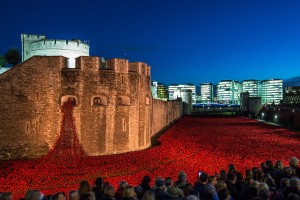When a performance is over, what remains? . . . The event scorches on to the memory an outline, a taste, a trace, a smell – a picture. It is the play’s central image that remains, its silhouette, and if the elements are highly blended this silhouette will be its meaning, this shape will be the essence of what it has to say.
Peter Brook, The Empty Space
My sabbatical year is coming to an end, and with it the time and physical freedom to be actively audiencing. This is because I live and work in rural Maine, where access to the professional arts is limited. Don’t get me wrong—art-making thrives at Colby College, where I teach and make theater, as it does in many of the small towns that dot the great state of Maine.
But if I want to see a major company or collection or international tour, or if I want to attend a festival of experimental performance, I have to hit the road. And so, thanks to Colby College’s generous sabbatical policy, I did. Here are a few favorite silhouettes gleaned from my audiencing over the course of the last academic year:
- Watching the unusually diverse audience watching the Mu Performing Arts’ recent production of Twelfth Night. I entered Minneapolis’ Mixed Blood Theatre with the first wave of audience members to arrive that evening, most of whom looked like me (white, middle-aged). Then I watched as the second wave came in to take their seats: a group of about 20 Somali school-aged children. And then the third wave: another 20 or so Asian-American teenage girls. I loved the production, from concept to performances. I loved being part of that highly unusual audience blend even more.
- Becoming part of a sub-audience during the intermission of Swan Lake at the Brooklyn Academy of Music. Yes, it was certainly a thrill to see the Mariinsky Theatre’s Ulyana Lopatkina dance Odette-Odile from center orchestra seats (thanks to my generous friend Ellen Kelson, who treated me). But what has really stuck in my mind is the impromptu performance given by a bunhead (she looked about 10 years old) in the lobby during one of the intermissions. She quite literally took over a large portion of the lobby floor to perform a few combinations presumably learned at her studio. It wasn’t cute. In fact it was obnoxious. And yet I can’t stop thinking about the level of command she had over her impromptu audience. What I really wanted out of that intermission was a glass of wine. But she made me watch her. How did she do that? Was she channeling Lopatkina?
- Being instructed to drop my sophisticated-theater-goer pose at the Under the Radar Festival. Before the formal start of Toshi Reagon’s concert version of the Parable of the Sower at the Public in January, Reagon came out, casually took a seat, and began fiddling with her guitar tuning. Then suddenly she looked up, panned the fan shaped auditorium from left to right, and announced: “You people have your theatre faces on. Take those off right now. No theater faces here tonight. We don’t do that.”
- Getting hopelessly lost, once again, in museums far and near. For people who are significantly directionally challenged like me, some museum visitor flow patterns, like those at the Carnegie Museum of Art in Pittsburgh, the Museum of Fine Art in Boston, and the Victoria & Albert in London, make no sense whatsoever. Should I just relax into it? Start dropping bread crumbs?
- Flowing with the queue at the Red Poppy memorial outside the Tower of London. When I got off the tube at the Tower Hill underground station on Armistice Day last November, I nearly panicked. The crowd was so large (in the tens of thousands) that I could barely make my way out of the station, let alone find the beginning of the line to view Blood Swept Lands and Seas of Red, the astonishing installation by Paul Cummins and Tom Piper marking the centenary of the start of Britain’s involvement in the First World War. But after a bit I found my place in the flow of people and began breathing with the crowd. The sea of red ceramic poppies seemed to move like undulating waves along the exterior Tower grounds, and so did we as we walked slowly along side it. For me the audience is indistinguishable from the installation; the fragments of speech that crossed my ear, my own thoughts, the noise of the city, the smells and feel of strange bodies pressed together, have all blended with the symbolic evocation of a bloody battlefield into one unforgettable silhouette.


[…] Priapic Drawings on Display at Art Basel, 2015 AJBlog: Straight|UpPublished 2015-06-21 Audiencing: The End of a Road AJBlog: We The AudiencePublished 2015-06-21 It’s creative; but is it beautiful? (My […]